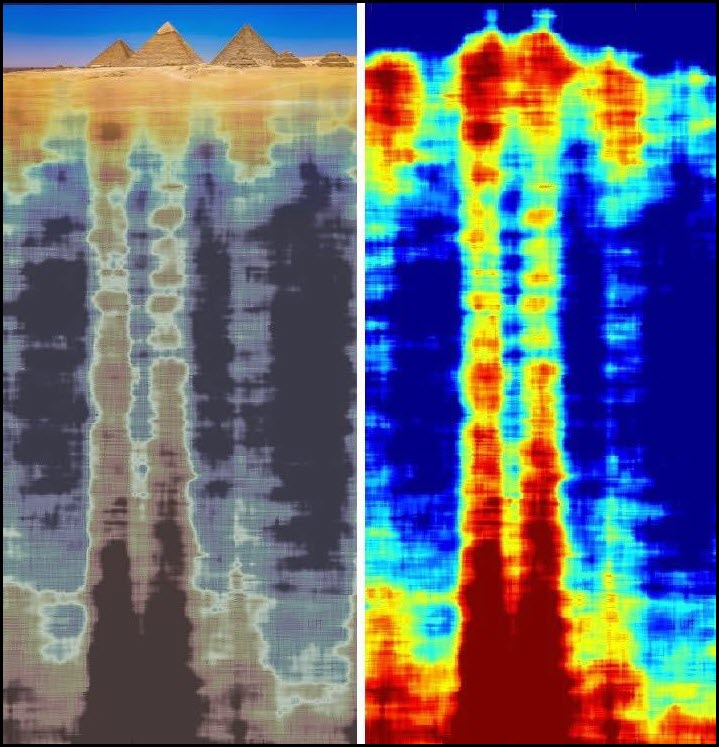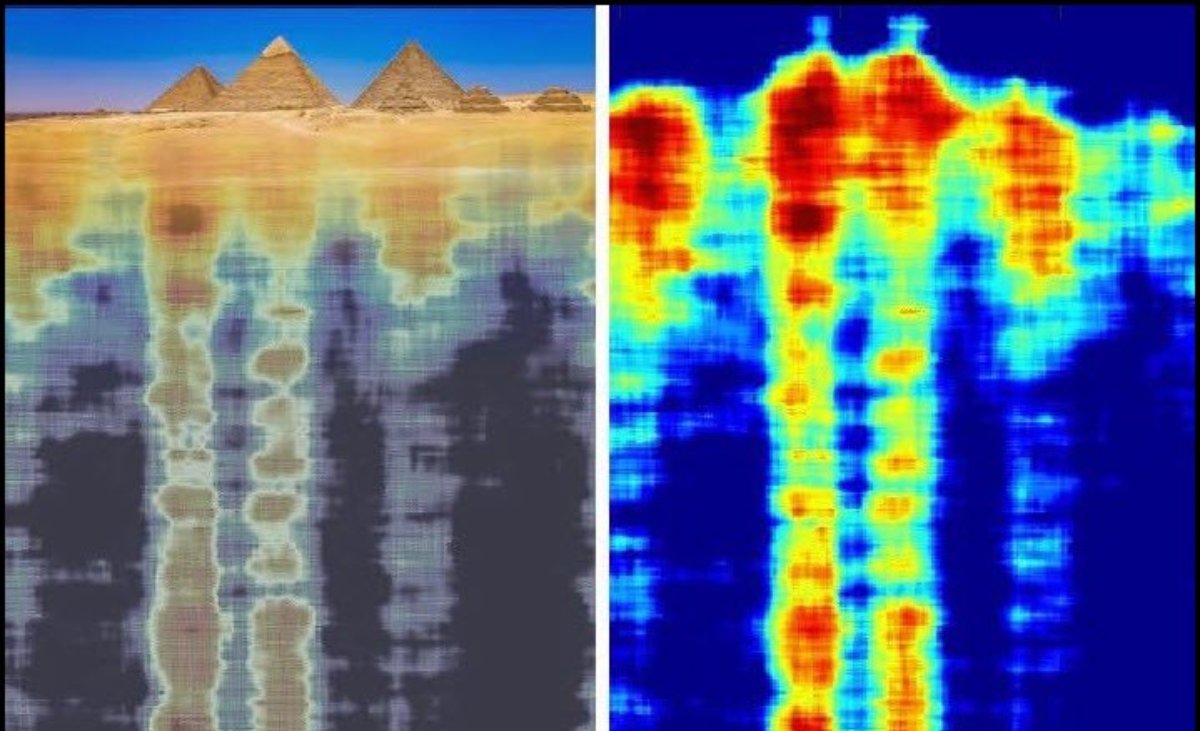The researchers claim to have discovered eight vertical cylinder-shaped structures, referred to as shafts, extending approximately 2,100 feet deep beneath the pyramids.
Italian and Scottish researchers claim they found a major discovery beneath the Pyramids of Giza, potentially rewriting the history of ancient Egypt. Using radar technology, the team led by Corrado Malanga from Italy’s University of Pisa and Filippo Biondi from the University of Strathclyde in Scotland announced the findings of what they describe as a vast underground city stretching more than 6,500 feet directly beneath the pyramids.

“This groundbreaking study has redefined the boundaries of satellite data analysis and archaeological exploration,” said the project’s spokesperson, Nicole Ciccolo, according to The Sun. She elaborated that the discovery “could redefine our understanding of the sacred topography of ancient Egypt, providing spatial coordinates for previously unknown and unexplored subterranean structures.”

The researchers used a new radar technology known as Synthetic Aperture Radar (SAR), which combines satellite radar data with tiny vibrations from naturally occurring seismic movements. The radar was used to create high-resolution three-dimensional images of underground structures, a method similar to using sonar to map the ocean floor. Their study, still awaiting peer review, suggests that the complex is ten times larger than the pyramids themselves.
The team claims to have discovered eight vertical cylinder-shaped structures, referred to as shafts, extending approximately 2,100 feet deep beneath the pyramids. Each shaft is said to be surrounded by spiral pathways that connect to two 80-meter cube-shaped structures. Above these, they reportedly found five multi-level structures connected by passageways.
“The existence of vast chambers beneath the earth’s surface, comparable in size to the pyramids themselves, has a remarkably strong correlation with the legendary Halls of Amenti,” Ciccolo stated. She explained that the cylindrical structures were found underneath each of the three pyramids and appear “to serve as access points to this underground system.”
Several experts have expressed skepticism regarding these claims. Independent experts, including Professor Lawrence Conyers, have raised serious concerns about the study. “I could not tell if the technology used actually picked up hidden structures below the pyramid,” Conyers told Daily Mail, calling the claims of a vast city underneath the pyramids “a huge exaggeration.”
He acknowledged that while small structures such as shafts and chambers might exist beneath the pyramids, the idea of a vast underground city is questionable. “The Mayans and other people in ancient Mesoamerica often built pyramids on top of the entrances of caves or caverns that had ceremonial meaning to them,” he explained, according to The Sun. “It is conceivable there are small structures, such as shafts and chambers, beneath the pyramids that existed before they were built because the site was special to ancient people.”
